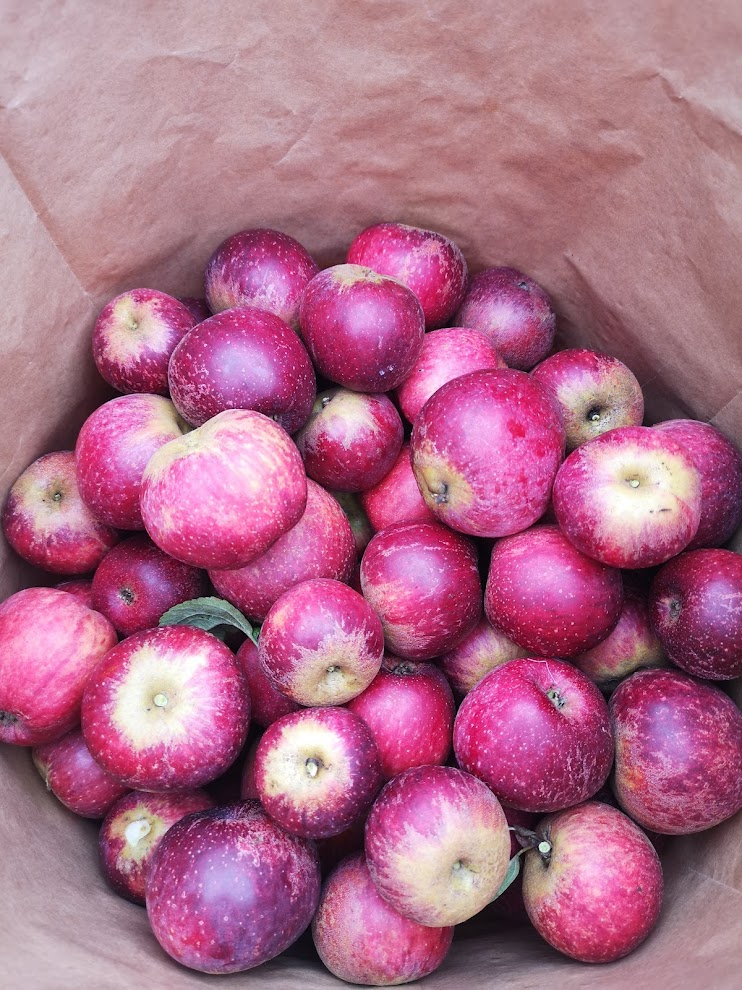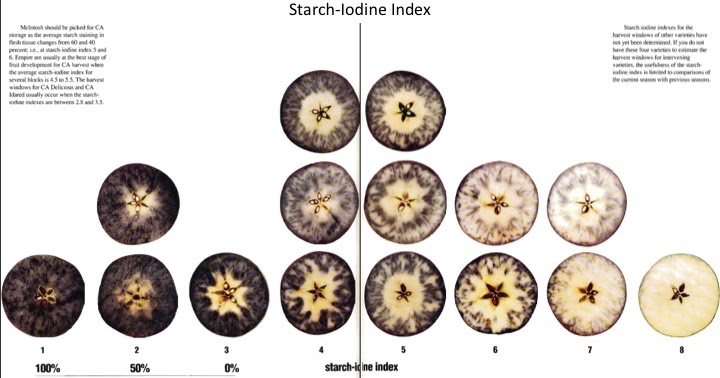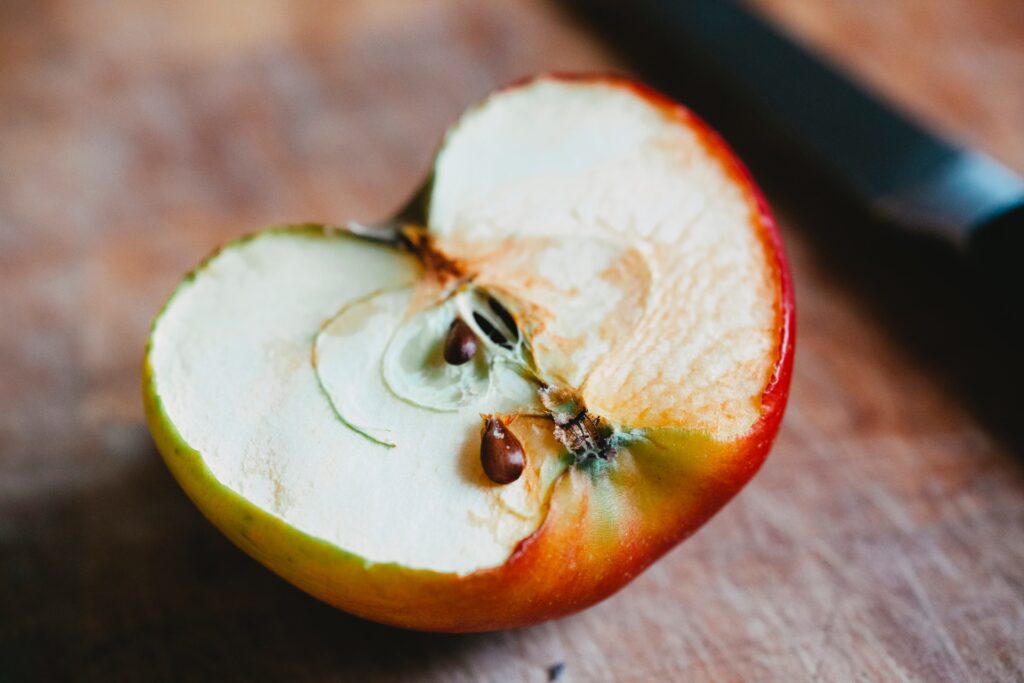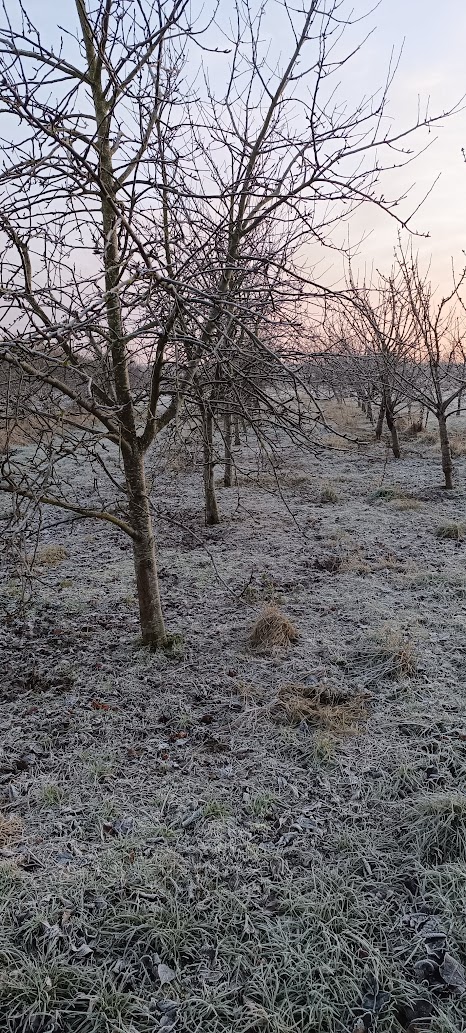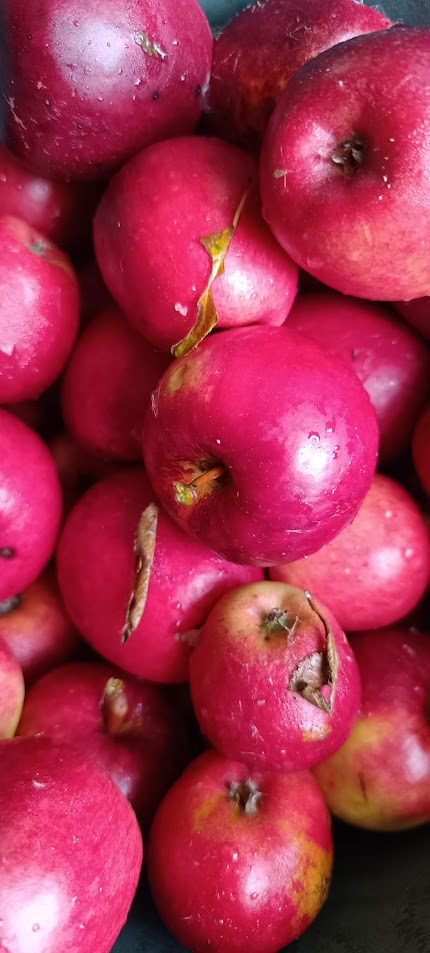Knowing when your apples are ripe
Knowing when cider apples are ripe
Taste Test
The taste test isn’t as reliable for cider apples as it is for some eating varieties. Bittersharp apples are never going to taste sweet, and in all honest, there isn’t much sweetness about bittersweet varieties either. For this reason, many cider apple growers rely on other methods to judge when their apples are ready for picking.
Apple Skin Tone
We are aware of a few apple maturity markers that, when combined, can indicate when fruit is ready to be picked. One is the skin tone of the fruit. Green apples are immature fruit. They start off as green and turn light green as they get older before turning red or yellow. Colour is not always a trustworthy predictor, though, as some brilliantly coloured apples turn to red weeks before they are fully grown.
Ground Colour
Another useful indicator is ground colour. The skin tone in the stem indentation is known as the “ground colour.” Apples’ ground colour varies from a bright green to a softer green and finally to yellow as they age. On many varieties, this transition is a reliable sign of maturity, but it is meaningless on Katy, Red Delicious and other solid red apple varieties.
Starch Iodine Test
This is probably the most reliable test of whether your apples are ripe or not, but it’s a lot more trouble than some of the other methods, especially if you haven’t got the supplies to hand. The test is predicated on the fact that unripe apples contain starch that has not yet undergone conversion to sugar by the fruit’s natural enzymes. All of that starch will have been converted to sugar by the time the fruit is fully ripe and won’t be noticeable. Iodine solution has the property of reacting with starch to produce a blue-black color but not with sugars. Many apples in the middle and end of the season need to be stored for a while before all of the starch is turned into sugar and they reach their optimal flavor. This is because they are not physiologically ripe when they are picked or fall from the tree.
Days Since Bloom
Counting the days since the tree’s spring bloom is the one of most precise ways to gauge ripeness. Each type of apple needs a certain number of days to ripen to its ideal state and charts are readily available for each variety. Some cider apple growers pencil in the harvest dates on their calendar as soon as the trees blossom in the spring. Of course, depending on the weather, these dates can change, but it’s generally a reliable enough way.
Ease of separation
A few apples will start to fall from the tree in the autumn. When apples are ready to self-seed, apple trees will spontaneously drop their fruit. To tell if the apples are ready to be picked, wait for one or two to fall from the tree. Ripe apples should be easy to remove from the tree by giving them a quick upward twist. Cider apple trees can sometimes drop fruit prematurely, as a response to dry conditions or drought. If fruits that are otherwise healthy start to fall off the tree it is likely that they are getting a touch too ripe and should be picked as soon as possible.
